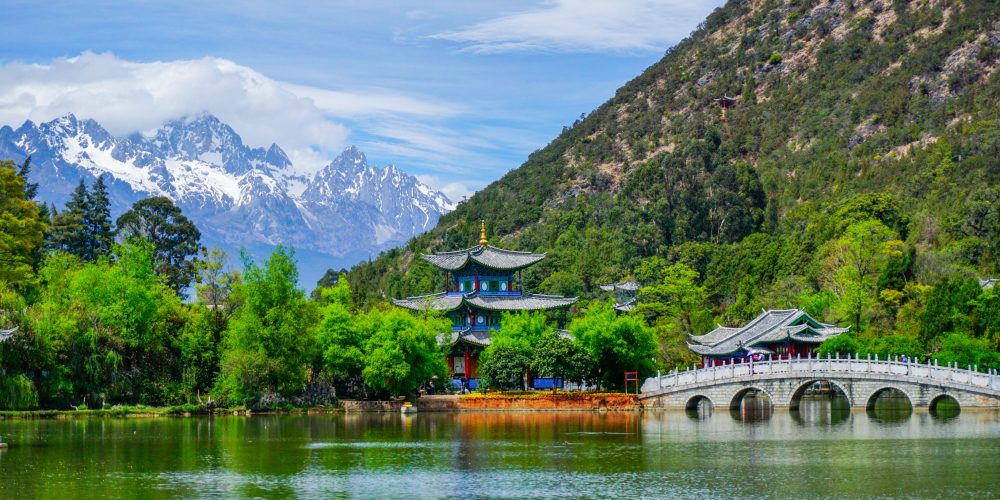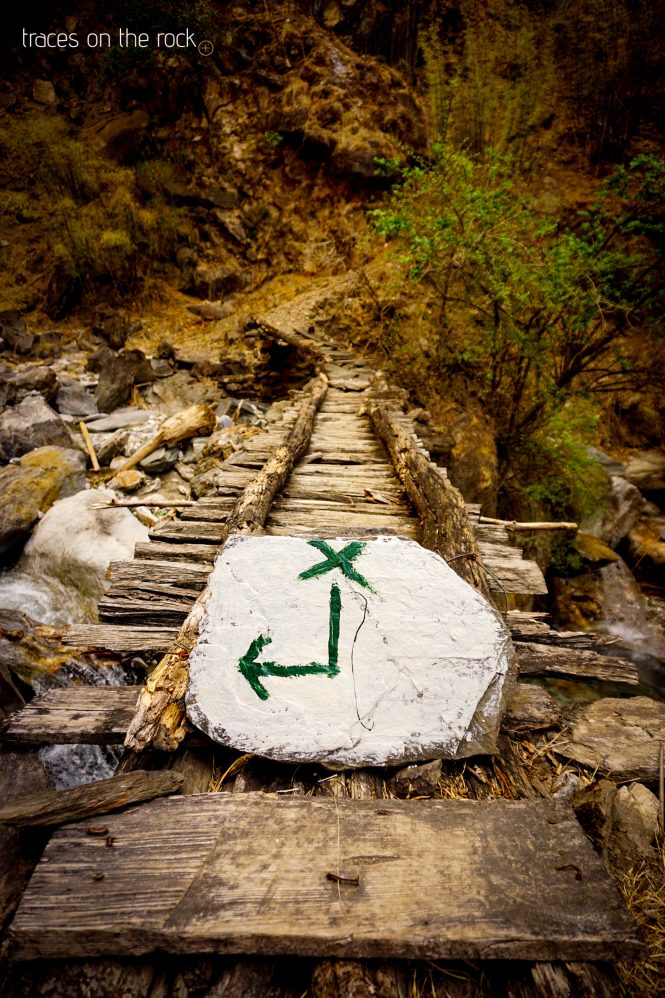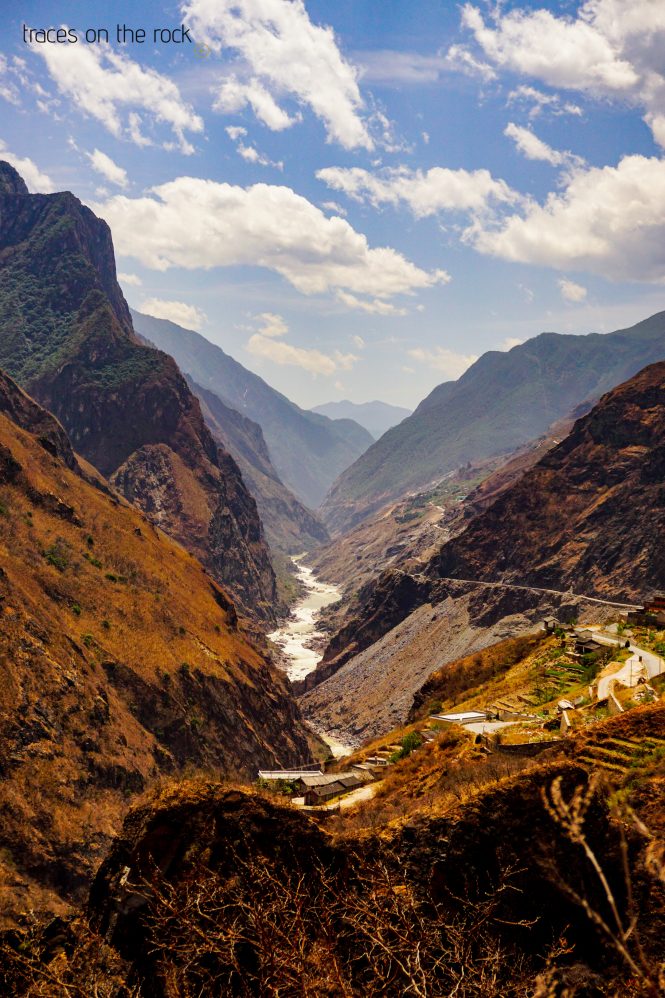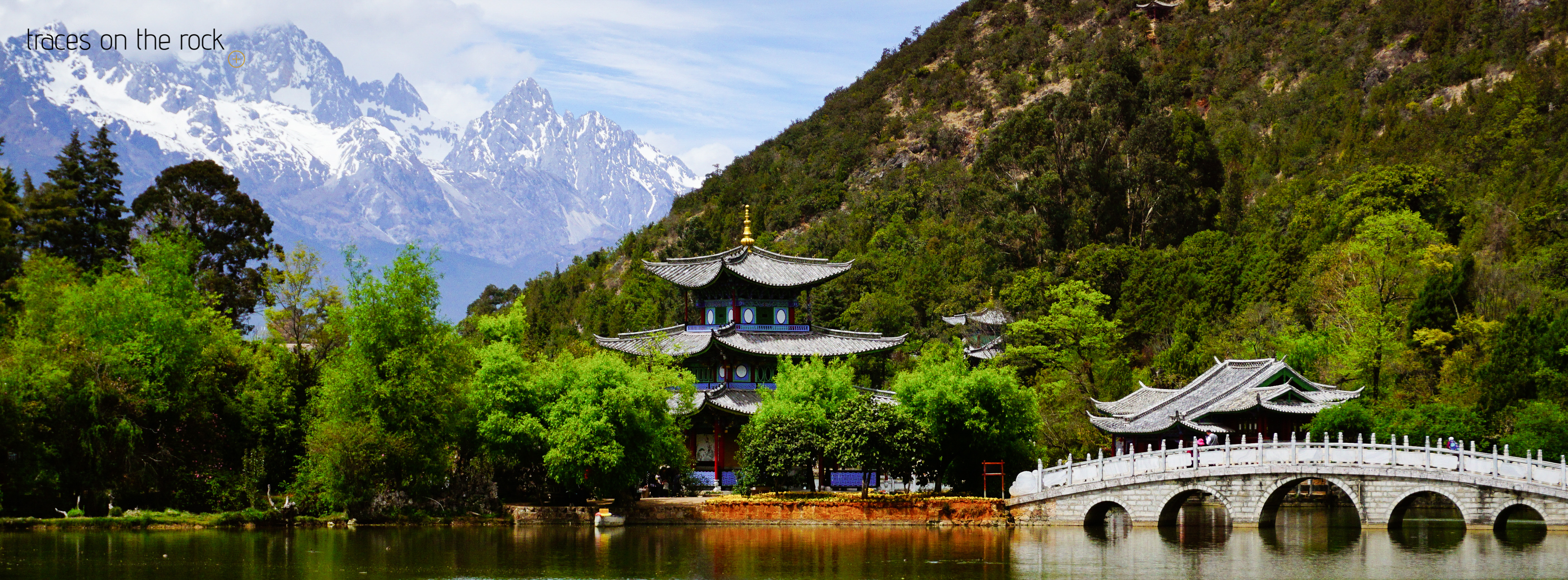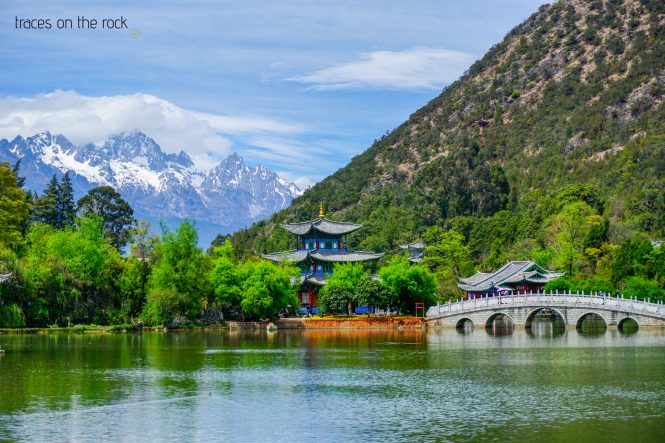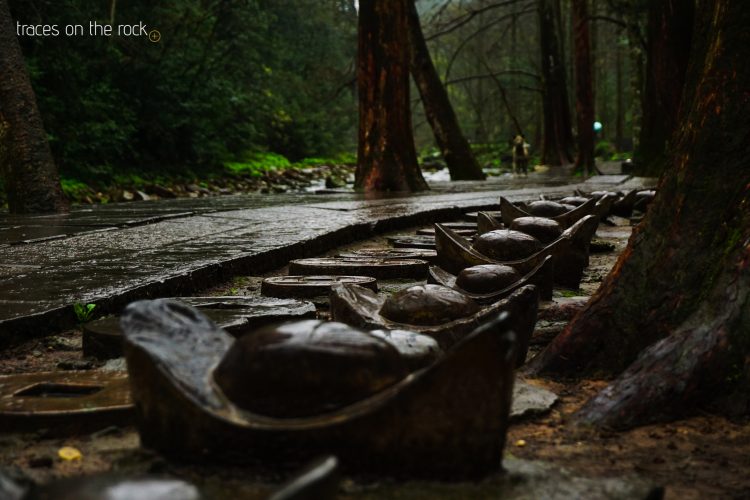Under suspicion?
It started with a harmless encounter in the Tiger Leaping Gorge, a picturesque canyon in western China. Coming from the Himalayas, the Jinsha River forms the upper part of the Yangtze River. Its huge volumes of water rush into the valley with an indescribable force and cause a deafening rumble. The amount of water and the gradient are so great that the Chinese government had planned 25 hydropower plants on the Jinsha River. Some of them are already finished.
Through the Tiger Leaping Gorge leads a popular multi-day hike. A Chinese tour group with a guide wanted to take pictures with us, an English-Norwegian couple and me. A few hours after this first meeting, our paths met again and I was sitting with one of the hikers in a dorm room of the Halfway Guest House. We talked with the help of translation apps. Initially, the conversation was harmless. Where are you from? Where have you been in China? But with the question of his name, the conversation took an unexpected turn. “What’s your name?” “Ai.” Ah, like Ai Wei Wei, the Chinese artist and political activist, I thought and said it. Eventually I was in a conversation about China’s politics.
“What do you think about corruption in China? I like Germany. There is no corruption in Germany.”
Ai
Do I really want to answer that? It rattled in my brain. I did not intend to be interviewed by Chinese authorities or to visit a Chinese prison from the inside. My answer was evasive. But it became more dubious: “I have a friend. I’ll get him, he’d like to meet you.” “Aha”, I thought. I evaluated my situation. He knew my first name. I was in the mountains. I have been touring China for 1.5 months on a route that deviates from the original plan – significantly. I am already in the family album of a Communist Party member who reminded me very much of former leader Mao Tse-tung in terms of dress, appearance and hairstyle. The camera surveillance in China is complete. Which options did I have? When the said friend came into the room, I was already busy with my phone. I wanted to avoid further conversations of this kind. Chinese are constantly staring at their cell phones The friend was the guide of the other hiking group. He tried to lock the door from the inside. I also tried that earlier in the evening. Unsuccessful. He was just as unsuccessful and finally put a bucket and sandals in front of the door to block it. If someone tried to break in, the bucket would make noise.
I was alone with two men in a remote room in the mountains. I was not so happy with that, but I’ve never been worried about crimes in China. I just did not want to have any experience with the Chinese authorities. Therefore, I initiated the second phase. I lay down to sleep without another word with the two change. I had a quiet night. The next morning, the two got up very early. At breakfast we nodded again to each other. Then they disappeared from my life. I remembered a BBC newspaper article. The Chinese government asked the population to report potential spies or suspects to the authorities. Even today, I wonder if I just had the chance to have a conversation about China’s politics or if I was in the focus on attentive fellow citizens. Unfortunately, I will never know. But the Tiger Leaping Gorge will be forever interwoven in my memory with this encounter. Just as the tiger once escaped its pursuers with a jump over the river, I have escaped my curious shadow and returned to Lijiang, a place in western China.
Chinas Shangri-La
This Yunnan region is often associated with the fabled Shangri-La from James Hilton’s novel “Lost Horizon“. In 2001, the town of Zhondian received permission to rename itself Shangri-La. It is only four hours by bus from Lijiang. Lijiang itself is worth the trip. One of China’s best-known photo opportunities is located in this town: a pagoda in the middle of a lake and in the background the year-round snow-covered jade dragon snow mountains. The sight is classic and timeless at the same time. The old town is situated at 2,600 meters in altitude and has nowadays the status of a UNESCO World Heritage Site. Besides the Han Chinese, the ethnic groups like the Naxi, Yi and Lisu live in this region. They play an important role in the tourism boom.
“We have a collection of several hundreds [maps] […] They are all open to your inspection, but perhaps I can save you trouble in one respect. You will not find Shangri-La marked on any.”
from James Hilton, Lost Horizon
The buildings of the old town are by no means all historical. In 1996, a magnitude seven earthquake destroyed much of the old town. After the reconstruction, the city received the UNESCO title. In my opinion this is fair, because the city has a lot of charm. The old town consists of a labyrinth of cobbled streets, water channels and bridges. Not even Google Maps can help if you’re lost. And that happened to me a few times. The wooden houses are richly decorated with carvings and there are, as usual, countless well-preserved temples.
At night, hundreds of Chinese lanterns and lampions illuminate the old town. At this time, the streets are filled with so many visitors that unhindered strolling is no longer possible. On the small, stone arched bridges and on the canals, tourists gather for selfies. It is comparable to a crowded subway in Japan, where you want to go through from front to back, but can only push slowly through narrow gaps. Every few meters visitors stop for culinary delights. Especially recommended are the flower cakes, with a sweet filling of flower petals.
I would have liked to stay longer, but I wanted to visit the famous Stone Forest in Kunming.
![]()

